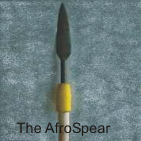Look at this year's candidates for Ms. Brasil. Of approximately 27 from each state and the Federal District in the country, not a single one has brown skin, even though the population of Brazil includes 50% of Brazilians with brown or tan Afro-descendent skin (see statistics below).
Fonte: IBGE * 2005 , ** Censo 2010
Etnias (Ethnicities) no Brasil
Pardos: 42,6% (means brown skin, like e.g. Francis L. Holland)
Brancos: 49,7%
Negros: 6,9% (means brown or black skin)
Indígenas: 0,3%
Amarelos: 0,5%
The population of the state of Bahia, where I live, has a ratio of ten brown-skinned people for every three white-skinned people, and yet the state's representative at the Miss Brazil contest will be white-skinned, whatever her heritage may be. And for at least the last two years, Ms. Bahia has been white.
In all fairness and reality, if you carefully study the faces of each of the women in the above video, specialist in who has recent African ancestry may be able to identify three or four women whose noses and lips are of a shape often associated with brown skin, even though their skin is not brown. And some of these women may proudly state that they are Black. However, the skin color test is quite evident here, as it is in many other parts of Brazilian society.
Miss. Amapá, Miss Ceará, Miss Espiritu Santo, Miss Maranhão, Miss Mato Grosso, Miss Paraíba, Miss Paraná, Miss Sergipe and Miss Tocantins' skin colors represent the outer limits of brownness for those seeking employment as dancers, guests and actors on many television soap operas and variety shows. Any darker and they become invisible.
Just look at the all-white cast of a recent miniseries, called "Tí, Tí, Tí, to confirm that only three out of seventy-six characters have unambiguously brown skin, and one of the two Black women plays a maid. In a country that is half brown, a television series has whites out-numbering Blacks by a ratio of 25 to 1. Color-determined roles are worse on Brazilian television than politics South Africa's historical apartheid regimes.
The Ms. Brazil website foresees the controversy over an all-white competition and so it points out, in a special section entitled "Black Beauty," that one of the candidates for Ms. Brasil in 2010, Ms. Ceará, had copper-toned skin. So, if you wait until next year, you may discover that a 50% brown and black-skinned country has at least one brown or black skinned contestant for Miss Brazil. This year, the contest might as well be for Miss Switzerland.
I do not refer to "race" above, because it is entirely possible in Brazil that one or more of the women in the video has a brown-skinned parent or grandparent. So, it would be arbitrary and speculative to say that all of these women with white skin are from the "white race."
Instead, it is entirely possible that one or more of the women shown here considers herself to be Black. But NONE of them, out of approximately 27, has brown skin. (There are 26 states and the Federal District in Brazil, each with a contestant for Miss Brazil.)
I would mention something like this to my beige-skin step-daughters, but they wouldn't understand how it was relevant that they had virtually zero percent chance of becoming Ms. Brazil, simply because their skin is too dark.
My obsession with realities such as these is one of the reasons I could not get along with my wife's daughters (e.g. I felt disgusted at the smell and the reality of their hot irons burning their hair straight, and their inability to understand why all-white institutions bothered me so), and so we split up. You might well say that my family was a victim of color-aroused ideation, emotion and behavior, at the individual, familial and societal levels.
Their mother would understand. She has Rasta Locks, unlike the entire herd of Ms. Brazil candidates, all with straight and/or straightened hair.






No comments:
Post a Comment